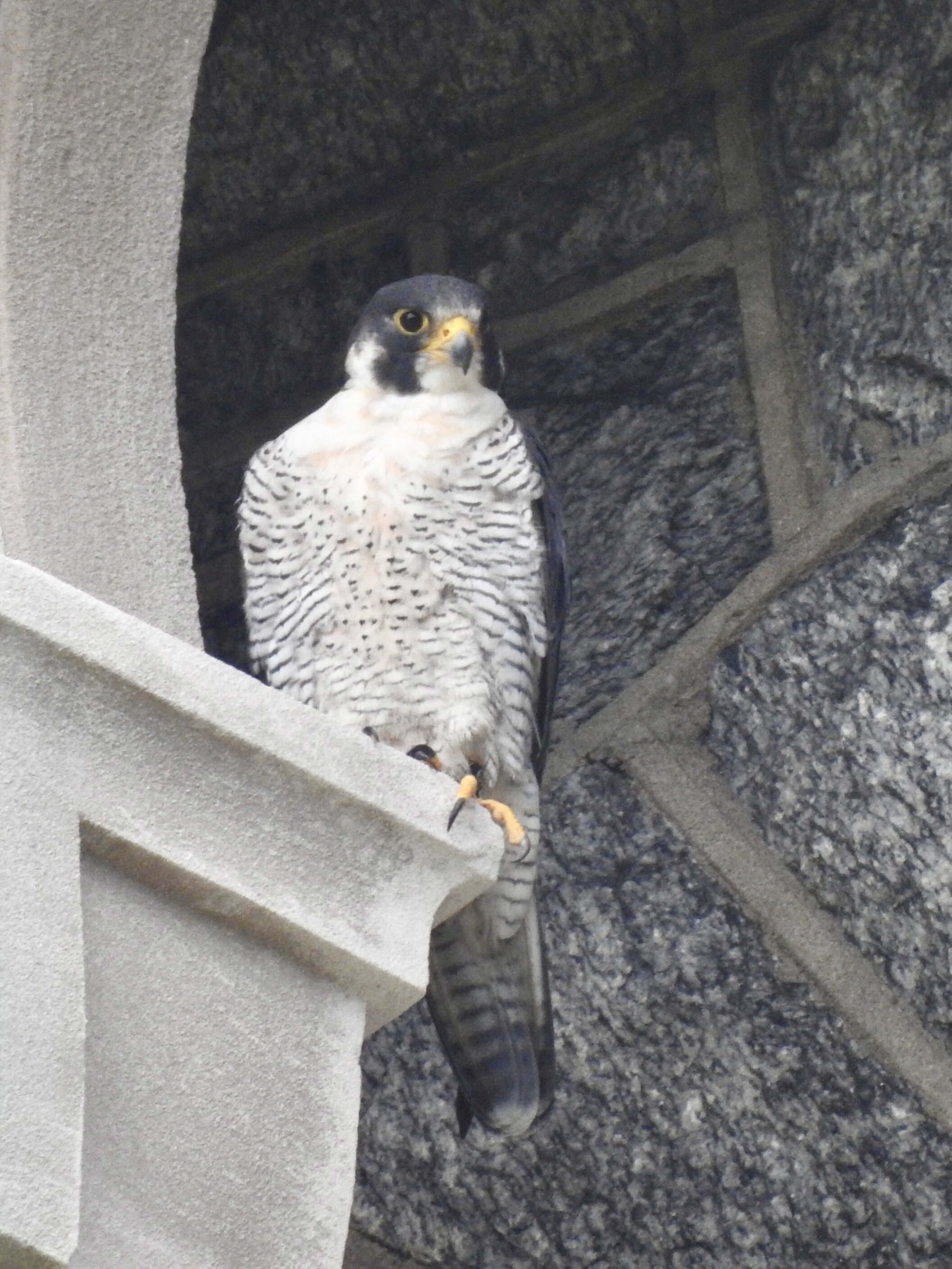It's Toribird here, and I am proud to report that our resident pair of Cooper's Hawks is back and hard at work on their nest! This year they moved over a couple trees, but are still in the same area - by the Dell, north of the colossal Evans obelisk. You can check out this previous post to watch a video of the baby Coops getting fed last year, as well as learn more about breeding birds at The Woodlands! Cooper's Hawks are nimble, forest-loving birds and a member of the genus Accipiter. You may see them weaving through trees and using their long tails to maneuver as they chase down songbirds for lunch, as is typical of this group of hawks.
A Peregrine Falcon perched on a church in West Philly, photo by Toribird
Cooper's Hawks aren't the only nesting raptors in the area - it is likely that a pair of Peregrine falcons has made themselves at home on a nearby CHOP building, and they can be seen flying around The Woodlands! It's great to have these birds around, and not just because they are gorgeous and also happen to hold the title of fastest animal in the world. Around the 1960s, their numbers plummeted with alarming speed due to widespread use of the pesticide DDT, and the East Coast population was extirpated. Thanks to the banning of DDT and concentrated reintroduction efforts, these fierce birds are again a familiar sight for Philadelphia birders. This is beautiful proof of the fact that, with enough effort, we can help bird populations recover in very noticeable ways. Peregrines have in fact adapted well to city life, likely because our tall buildings sufficiently echo the cliff faces on which they like to nest, and the abundance of Rock Pigeons provides them with plenty of prey.
A third raptor to keep your eyes out for is the Broad-winged Hawk. In contrast to the two mentioned above, this species is just passing through on migration. They typically follow the natural ridges as they travel, and thus are easier to spot in northwest Philly. However, they can also be seen in other parts of the city - and I actually had at least two at The Woodlands on April 16th! It was really nice to see them because they're not super easy to find, but also because Philadelphia is entrenched in the scientific history of this species.
Alexander Wilson collected the first Broad-winged Hawk specimen known to western science at Bartram's Garden, which is just a short trip downriver from The Woodlands. The specimen is housed at the Academy of Natural Sciences of Philadelphia, and Wilson himself is interred at Old Swedes Church in Old City. And guess what - William Bartram was a mentor of sorts to Wilson, encouraging his interest in ornithology, and Bartram was also close with our own William Hamilton!
A small kettle of Broad-winged Hawks, photo by Toribird
So I bet you want to spot a Broad-winged Hawk now - so head outside in the morning, especially on a day with winds from the south and, well, look up! Adult Broad-wings have short tails with wide black-and-white stripes, a brown back, and dark borders to pale wings. They usually travel in groups, which are called ‘kettles’. And these are just one of many other migrating birds that are passing through right now, so I hope you enjoy this biannual spectacle of bird diversity!



